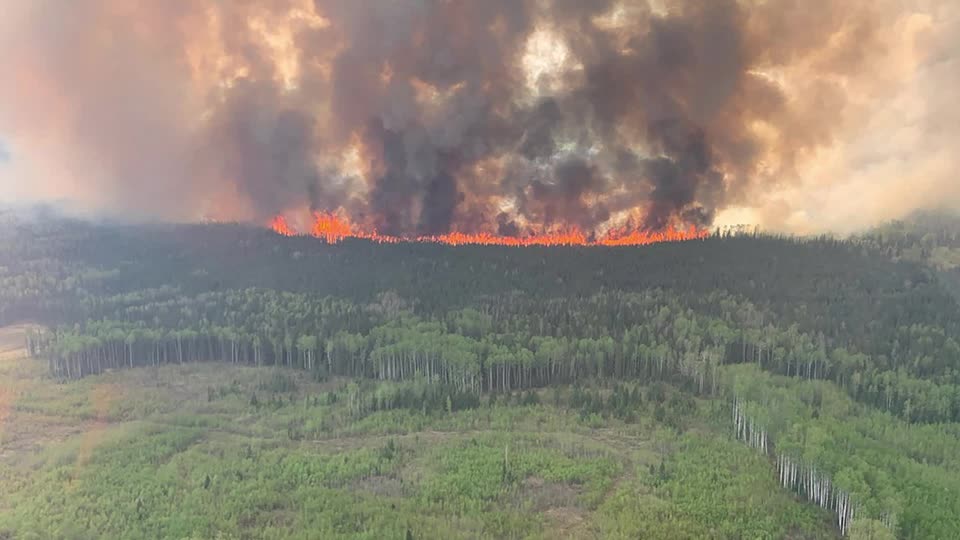
[elfsight_social_share_buttons id=”1″]
Canada’s main oil-producing province of Alberta faces an upsurge in wildfire activity as western Canada swelters in hot, dry weather and blazes keep thousands from their homes.
Authorities said Saturday they had already seen an increase in fire activity and were expecting more. Residents forced to evacuate early this month say they are frustrated with the indefinite displacement.
Special alerts have been declared across western Canada, and officials urged vigilance with temperatures in some areas forecast to hit 30° Celsius (86°F), 10 to 15 degrees above normal.
“The wildfire danger is extreme in most of the province and will continue to increase in the coming days,” Alberta Wildfire official Josee St-Onge told a briefing Saturday.
“We are expecting wildfire activity to pick up today. In fact, it already has.”
As of Saturday afternoon, there were 83 active wildfires in Alberta, 21 of them out of control, according to authorities. About 16,500 people were displaced as of Saturday, down from about 30,000 earlier this month.
Oil and gas producers had shut in at least 319,000 barrels of oil equivalent per day, or 3.7% of national production.
Recent cooling and rain helped firefighters tackle some blazes and restored most of the energy production, but expectations of rising weekend temperatures have fanned worries.
“We remain in an extremely volatile situation, and the risk of new wildfires remains significant in much of the province,” said Bre Hutchinson, with the Alberta Emergency Management Agency.
“Hot and dry conditions are expected to continue over the weekend and into next week.”
Officials urged anyone wanting to help fight fires to contact their local authorities first and work with them.
On Friday, the town of Drayton Valley told residents in a Facebook post that they should expect to be out of their homes for “at least another week.”
Authorities in Brazeau County, southwest of the provincial capital Edmonton and which includes Drayton Valley, said on Facebook on Saturday morning it had seen an increase in fire activity and expected a further increase.
The Canadian army is helping with firefighting and recovery efforts in the province, where a state of emergency has been in place since May 6.
More than 200 soldiers were deployed after Prime Minister Justin Trudeau’s government approved a request for federal assistance on Thursday, with about 100 more are expected to be deployed over the coming days.
More than 300 firefighters have come from across Canada and the United States and another 200 are expected from the U.S.
Environment Canada issued an air quality advisory for northern Alberta due to wildfire smoke, urging people to reduce their exposure.
In the west coast province of British Columbia residents were warned to be alert for fires and floods with temperatures set to soar over the weekend. The province’s energy agency predicted record-breaking power use.
Transport Canada asked in a tweet Saturday for people to keep their drones out of the sky near wildfires. “Unauthorized drone use is impeding firefighting operations.”
Marie Svejda, 74, has lost track of how many days she has been living in a tent on an empty lot with her mini dachshund, Peanut. She was awoken at midnight in early May at home in Drayton Valley and told to evacuate with thousands of others.
“It was craziness,” said Svejda, who has been using a nearby gas station bathroom.
She said she does not understand why it is taking so long to get the fires under control.
“What the heck are they doing there? Are they having a party? … They keep telling us, ‘Be patient. Be patient.’ Well, listen: Patience has its limits.”
Now she is preparing to decamp to a hotel.
“If I stay here any longer I won’t remember my own name. … It really, really sucks,” she said.
“When I come back, I tell you, I will kiss the ground.”
Copyright 2023 Thomson/Reuters
